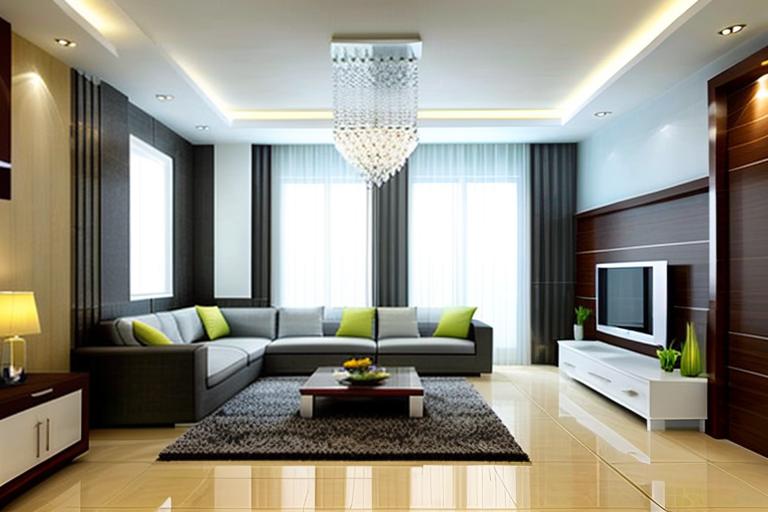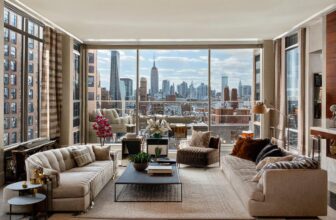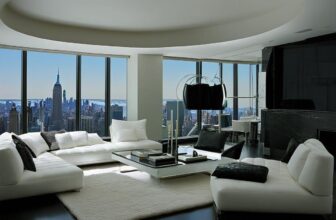
Understanding the Cost of Hiring an Interior Decorator
When embarking on the journey of transforming a space, many homeowners and business owners consider enlisting the help of an interior decorator. An interior decorator brings expertise in aesthetics, color coordination, and space optimization to create a cohesive and visually pleasing environment. However, one of the most common concerns is the cost of hiring such a professional. Understanding the factors that influence pricing, the different pricing structures, and the value a decorator brings can help you make an informed decision. In this comprehensive guide, we’ll break down the cost of hiring an interior decorator and provide insights to help you budget effectively.
1. Factors Influencing the Cost
The cost of hiring an interior decorator is influenced by several factors. Understanding these will give you clarity on why fees can vary widely.
a. Scope of the Project
The scale of your project plays a significant role in determining the cost. Decorating a single room will cost less than designing an entire home or office space. Larger projects require more time, materials, and expertise, which inevitably increase costs.
b. Experience and Reputation
Experienced decorators with established reputations often charge higher fees. Their expertise, network of suppliers, and proven track record can justify their premium rates. Newer decorators or those with fewer credentials may offer more budget-friendly options.
c. Location
The cost of interior decorating services can vary based on your geographic location. Professionals in metropolitan areas or high-cost-of-living regions typically charge more than those in smaller towns or rural areas.
d. Complexity of Design
Elaborate designs involving custom furniture, intricate layouts, or specialized materials can increase the overall cost. A minimalist design may require less investment compared to a maximalist approach.
e. Materials and Furnishings
The quality and quantity of materials and furnishings selected will significantly impact the total cost. High-end brands, custom-made furniture, or rare materials come with a higher price tag.
f. Timeline
Tight deadlines can also influence pricing. A decorator may charge extra for expedited services to meet your timeframe.
2. Pricing Structures for Interior Decorators
Interior decorators use various pricing models, depending on their business practices and the project’s requirements. Here are the most common structures:
a. Hourly Rate
Many decorators charge an hourly rate for their services. This rate typically ranges from $50 to $500 per hour, depending on the decorator’s experience and location. Hourly billing is ideal for clients who need minimal guidance or specific tasks, such as color consultations.
b. Flat Fee
A flat fee is a predetermined amount agreed upon before the project begins. This model is common for well-defined projects with a clear scope. Flat fees can range from $2,000 for a small room to over $50,000 for larger or more complex projects.
c. Percentage of Project Cost
Some decorators charge a percentage of the total project cost, typically ranging from 10% to 30%. This model aligns the decorator’s fee with the scale of the project and is common for large-scale renovations or luxury projects.
d. Cost-Plus Pricing
In this model, the decorator adds a markup (usually 10% to 25%) to the cost of furniture, materials, and services. This approach allows the decorator to manage purchases on your behalf and ensures a profit margin for their efforts.
e. Consultation Fee
For clients seeking advice without committing to a full project, some decorators offer consultations for a fixed fee. These consultations typically cost $200 to $500 per session.
3. Breaking Down the Costs
Let’s take a closer look at how costs are distributed in a typical interior decorating project:
a. Initial Consultation
The initial meeting with a decorator often involves discussing your vision, budget, and timeline. While some decorators offer free consultations, others may charge a nominal fee to ensure serious inquiries.
b. Design Concept
Developing a design concept involves research, mood boards, and layout planning. This phase may account for 10% to 20% of the total project cost.
c. Sourcing and Purchasing
Decorators often handle the sourcing and purchasing of furniture, materials, and accessories. They may charge a procurement fee or include this service in their overall pricing.
d. Implementation
The execution phase includes overseeing installations, arranging furnishings, and final styling. Decorators may work with contractors or supervise the project to ensure alignment with the design plan.
e. Miscellaneous Expenses
Additional expenses, such as travel costs, permits, or specialized labor, may also contribute to the overall budget.
4. Real-World Examples of Interior Decorating Costs
To provide a clearer picture, here are some real-world scenarios with approximate costs:
- Single Room Redesign: $1,500 to $10,000
- Entire Home Makeover: $20,000 to $100,000+
- Office Space Design: $15,000 to $80,000
- Luxury or High-End Projects: $100,000 to $1,000,000+
5. Maximizing Value When Hiring an Interior Decorator
a. Set a Clear Budget
Determine how much you’re willing to spend and communicate this to your decorator. A clear budget helps guide decisions and ensures expectations are aligned.
b. Do Your Research
Review portfolios, read reviews, and ask for references before hiring a decorator. A good match in style and communication is essential for a successful project.
c. Be Open to Collaboration
Share your ideas and preferences but remain open to your decorator’s suggestions. Their expertise can help you achieve results you may not have envisioned.
d. Prioritize Key Areas
If budget constraints exist, focus on high-impact areas, such as the living room or kitchen, to make the most of your investment.
e. Plan Ahead
Allow sufficient time for planning and execution to avoid rush fees or costly mistakes.
6. Is Hiring an Interior Decorator Worth It?
Hiring an interior decorator can be a worthwhile investment for those seeking a professionally designed space. Beyond aesthetics, decorators bring:
- Expert Knowledge: Their understanding of design principles, trends, and materials ensures a cohesive and functional space.
- Time Savings: Decorators handle the legwork, from sourcing to coordinating installations, saving you time and stress.
- Access to Resources: Their connections to suppliers and tradespeople can result in discounts or access to exclusive items.
- Increased Property Value: A well-designed space can enhance the value and appeal of your property.
7. Alternatives to Hiring a Full-Service Decorator
If hiring a full-service decorator is outside your budget, consider these alternatives:
a. DIY with Guidance
Some decorators offer “design packages” where they provide a plan and shopping list for you to execute on your own.
b. Virtual Design Services
Online platforms connect you with decorators who provide virtual consultations and design plans at a lower cost.
c. Hourly Consultations
Hire a decorator for a few hours to address specific questions or challenges, rather than overseeing the entire project.
The cost of hiring an interior decorator varies widely based on factors like project size, location, and the professional’s expertise. While the upfront investment may seem significant, the value they bring—in terms of time savings, expertise, and enhanced aesthetics—often outweighs the expense. Whether you’re redesigning a single room or an entire property, understanding the cost structures and planning your budget carefully can help you achieve the space of your dreams without breaking the bank.




